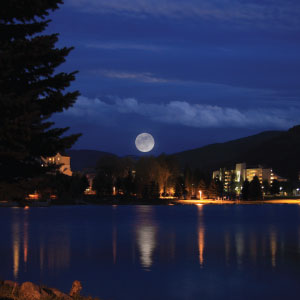
The days are short, the wind is blowing, and temperatures are freezing. All around us animals are turning inwards to their burrows and nests to curl up and rest. If you’ve been shoveling your driveway, layering up, and hitting the slopes, it may be surprising to learn that, technically, winter has just begun. That’s right. The first day of winter was only yesterday.
The winter solstice, December 21st, occurs when the northern hemisphere is farthest from the sun, as a result of the Earth’s 23 degree tilt. Imagine an offset globe with the North Pole on top and pointing away from the sun. This tilt is why winter is dark and cold and the sun follows a low arc as it travels across the southern sky. At this point, because our hemisphere is the farthest from the sun we experience the shortest day and longest night of the year. Yesterday there was only 9 hours and 21 minutes of daylight.
While ancient people may not have known that the Earth is tipped on its axis, they were aware of daylight patterns. Monuments, such as Stonehenge, are believed to have been built in honor of the solstice. Why would people give thanks for the darkest day of the year? While winter solstice is the shortest day of the year, it marks the beginning of the sun’s return. Those who erected these monuments considered it the “rebirth of the sun” because each day after the solstice the lean of our planet points more towards the sun, adding a little extra sunlight to each day. As a result we will experience a daily increase in light until June 21st when the summer solstice brings us a whole 15 hours of sunshine.
Celebrating the day of the solstice could include lighting candles to remind you of the sun that is on its return. You could also give thanks for the sun by taking advantage of the late sunrises (around 7 am) and going for a wintery walk to start your day.
While your first instinct may be to groan at the lack of light, the solstice provides ample opportunity for reflection and relaxation. Hundreds of years ago, prior to warm cars and electric lights, the winter weather limited our ability to be consistently productive. As such, winter is a time for relaxation and reflection.
In the midst of the busy holiday and travel season gift yourself the time to enjoy your morning coffee. Go ahead and lay in bed and finish the last chapter of your favorite book. Put off your productivity for just an hour and play some board games with the family. Like an animal who settles in to its den for winter, or a seed patiently awaiting the perfect conditions to grow towards the light, take this time to rest and reflect on the past year. Soon the sun will be back you can run, dance, and zip around with renewed energy.
Happy winter!
Katherine Trudeau is an educator for school programs at Walking Mountains Science Center and a Foley Graduate Fellow working on her Master’s degree in science education.
Photo by Rick Spitzer








